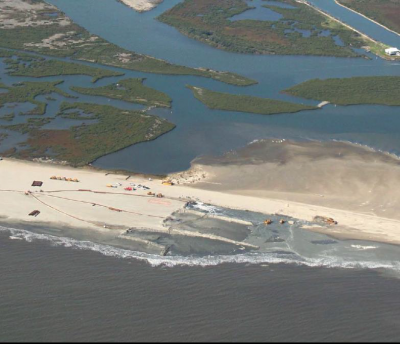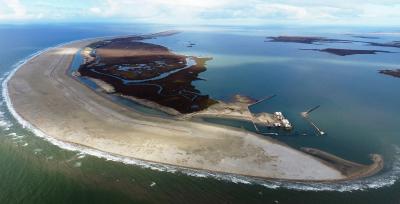By Barry Obiol, Deputy Director of Bureau of Ocean Energy Management’s Gulf of Mexico Region
For those of us who live in south Louisiana, the idea of coastal resilience is part of our daily lives—we encounter hurricanes, coastal storms and floods on a regular basis—so much so that cleaning up after a storm and getting our lives back to normal in as short a time as possible has become second nature to us. While our ability to bounce back has been tested over time, what we have seen in south Louisiana is that our coastal wetlands and barrier islands are experiencing continued degradation.
The marshlands behind the Caminada shoreline, the first available stopover for migratory birds crossing the gulf, were being destroyed. If left unabated, the loss of Caminada Headlands would assure saltwater intrusion into the inner marshes, and destroy irreplaceable nurseries where fish, shrimp, crab and oyster reproduce. The eventual disappearance of the coastal shoreline would pose an imminent threat to nearby Port Fourchon, the State of Louisiana’s multiuse seaport.
There was deep concern from both the state and federal government regarding the Caminada Headland. As Deputy Regional Director for the Department of the Interior’s Bureau of Ocean Energy Management (BOEM) in the Gulf Coast region, it was my job to discover what we could do to help repair this coastline. We held meetings with the Coastal Protection and Restoration Authority (CPRA) searching for answers. We concluded that the best solution to stopping the erosion was to use a resource that my agency had in abundance: sand.
With this decision, members of BOEM’s Marine Minerals Program worked with CPRA to obtain funding and overcome any delays in this time-sensitive project, which became known as the Caminada Headland Beach and Dune Restoration Project. Fortunately, there was confirmed usable sand readily available in federal waters at nearby Ship Shoal, so wheels were put in motion to get the sand from the bottom of the gulf to the barrier island where it was needed.
While the heavy lifting of dredging and placing the sand began in 2017, the process of coastal restoration consists of much more than spreading sand. Innovative measures were used to protect beach-nesting and the migratory bird population, so that they remained undisturbed. Nearly 200 sea turtles were relocated near Ship Shoal to adjacent foraging grounds. Around 72,000 linear feet of sand fencing was erected and over 195,000 native plants were put in place to abate potential sand loss. Ultimately, over 1,050 acres of beach and dune habitat was reconstituted utilizing over 8.8 million cubic yards of sand.
The two-year, $216 million dollar project, which restored 13 miles of the Caminada Headland, was a success on all fronts. In 2019, the Caminada Headland Beach and Dune Restoration Project was given the American Shore and Beach Preservation Association’s Best Beach Award.
Caminada Headland is just one of several coastal restoration projects that have taken place in the region. West of Caminada, BOEM worked with the CPRA on the Caillou Lake Headland project, where approximately 4.3 miles of beachfront was restored, creating a total of 954 acres of habitat. BOEM also worked with the State of Mississippi, the National Parks Service, and U.S. Army Corps of Engineers to repair a huge cut created by Hurricane Camille in 1969, putting 6.3 million cubic yards of sand in place to make the once-split Ship Island whole again after 50 years’ time.
The Trump Administration has focused on improving our nation’s infrastructure and delivering much-needed investment to our communities.
With half of the United States’ population living within 50 miles of coastline, and countless others enjoying the recreational opportunities this environment offers, a healthy coastal ecosystem is everyone’s concern. Given the enormous scale of creating and maintaining coastal resilience, effective partnerships between state and federal governments are essential for such efforts to succeed.



